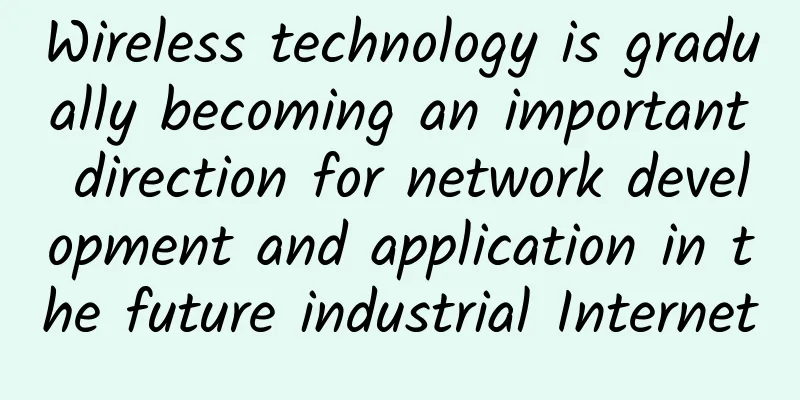Wireless technology is gradually becoming an important direction for network development and application in the future industrial Internet

|
Germany's "Industry 4.0 R&D White Paper" and "Industry 4.0 Implementation Strategy and Reference Architecture" both regard wireless technology as an important part of the research and innovation of Industry 4.0 network communication technology. Among them, Wi-Fi, NFC, zigbee, 2G/3G/4G, LORA and other wireless technologies have become important technologies for connecting the transmission layer. The industrial communication methods at each level are slightly different. The five-level hierarchical architecture has different communication methods at each level. Considering the differences in responsibilities and missions assigned to each level, the industrial communication methods are also different. At the ERP and MES layers, the interconnection is mainly through routers, industrial Ethernet and buses. There are not many changes in the current network communication. At the control layer, the main communication methods are PROFIBUS, MODEBUS, industrial Ethernet and fieldbus, etc.: At the sensing layer, the main communication methods are field bus, wireless network, LTE, ZIGBEE, WIFI, and LORA. Due to the mobility of the equipment, wireless communication networks are widely used. At present, wireless technology is gradually becoming an important direction for network development and application in the future industrial Internet due to its advantages such as easy deployment, low construction cost and wide applicability. Wireless network, as the name implies, is a network data transmission system that uses radio waves instead of cables to achieve location-independent computer equipment. It is an important direction for the development of modern data communication systems. With the mutual penetration and combination of computer network technology, wireless technology and intelligent sensor technology, a new concept of networked intelligent sensors based on wireless technology has emerged. This networked intelligent sensor based on wireless technology enables industrial site data to be directly transmitted, published and shared on the network through wireless links. Wireless communication technology can provide high-bandwidth wireless data links and flexible network topology structures for communication between various intelligent field devices, mobile robots and various automation equipment in factory environments. It effectively makes up for the shortcomings of wired networks in some special environments and further improves the communication performance of industrial control networks. Take the wireless street lights in smart cities as an example. Through ZigBee or LoRa, there is no need to modify the lamps, set up communication lines, modify the power distribution cabinets, and build a huge machine room for analysis and control based on the cloud platform. Whether it is renovation or new construction, wireless is better than wired in terms of construction, cost, later scalability, maintenance, etc. By 2020, there will be more than 50 billion wireless terminals in the world. In the future, more and more application scenarios of industrial communications will be wireless. |
<<: 6 AI Elements You Need for a Wireless Network Strategy
>>: How did Huawei Cloud become a public cloud leader after just over a year in the market?
Recommend
TCP state transition and production problem practice
The previous article introduced the main processe...
Talk about TCP's three-way handshake and four-way wave
[[379162]] 1. Introduction to Transmission Contro...
Acceleration Cloud: Deyang High-Defense Cloud Server 39 yuan/month-dual core/2G memory/60G hard disk/5M bandwidth/100G defense
Acceleration Cloud is a website under Chengdu Xia...
[Black Friday] spinservers: $270 off San Jose high-end servers, dual E5-2683 v4, 512G memory, 2*3.83T SSD, 10Gbps bandwidth
There are still a few days before Black Friday, a...
Kvmla's 10th anniversary: 50% off for annual VPS and 20% off for monthly VPS, old users get 100 off for 500 RMB, 15% off for Singapore/Japan dedicated servers
Kvmla has not released promotional information fo...
China's Internet world under the epidemic is being "mirrored" around the world
DingTalk made its debut in Japan. "Well... t...
[6.18] ZJI: Hong Kong Kwai Wan server limited 30% off, 20% off for all, 999 yuan to enjoy 1100 yuan voucher
ZJI released the 618 event plan. On the basis of ...
The 5G process will not be interrupted, and the short-term impact of the epidemic on the optical communications industry is controllable
During the past Spring Festival, the novel corona...
The next generation of computing defined by Cisco is born
For more than 30 years, Cisco has been driving th...
Ruijie Cloud Desktop solves financial development and testing problems and is praised by Yixing Rural Commercial Bank!
Technology drives the transformation of the times...
5G New Year's Guide
The lack of New Year's atmosphere during the ...
How can operators easily get on the battlefield in the 5G era? 4.5G will take on the heavy responsibility
With the arrival of 5G, maintaining 2G, 3G, 4G, a...
Can mobile phone numbers still be used normally if virtual operators go bankrupt? MIIT responds: Basic telecommunications companies will take over
[[422542]] According to the Gongxin Micro Newspap...
Huawei's first Intelligent Computing Conference was held in Beijing. Huawei released a new intelligent computing strategy to meet the 100 billion market
[51CTO.com original article] On December 21, 2018...









